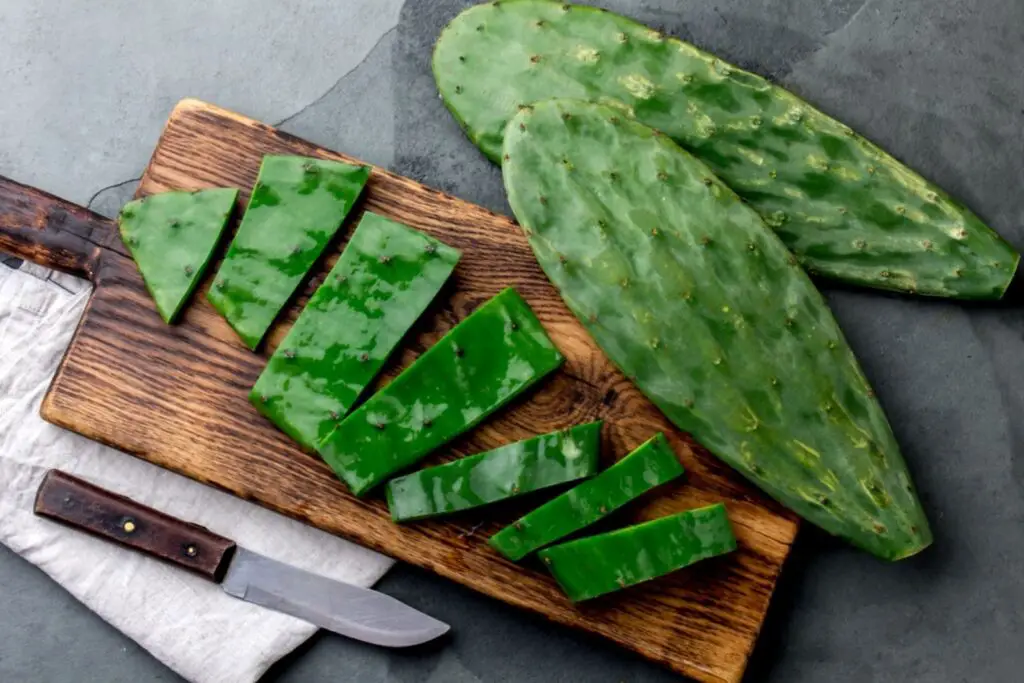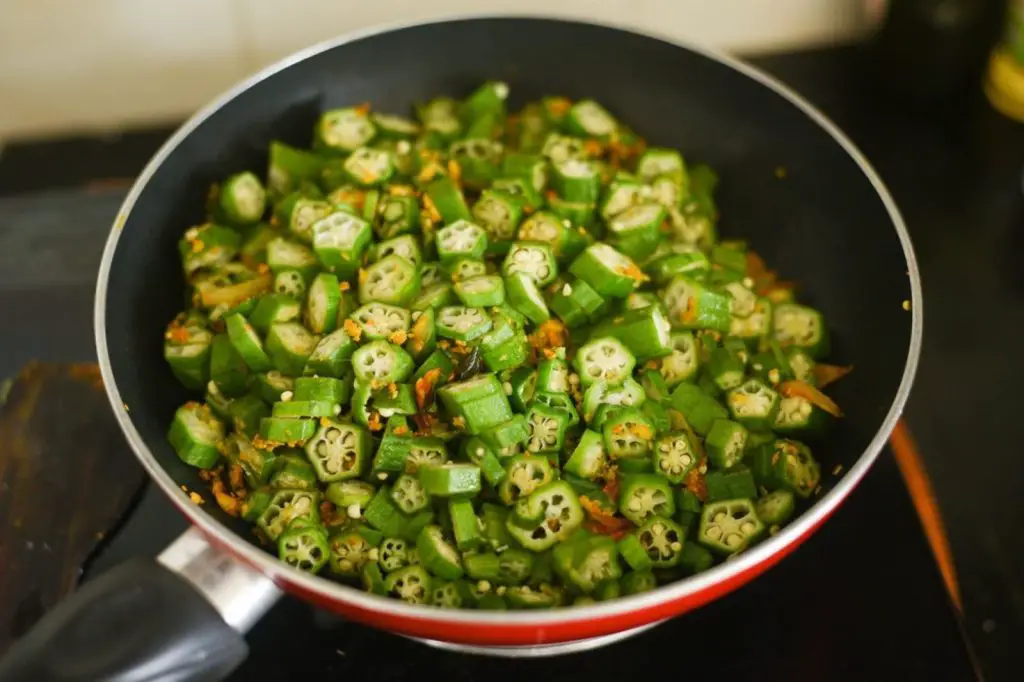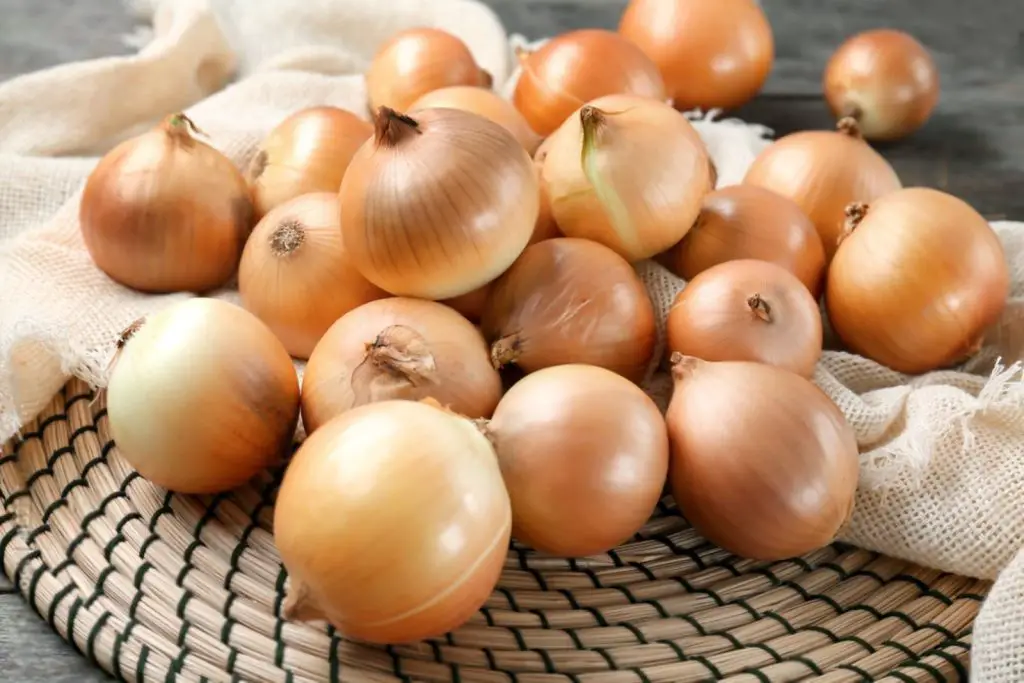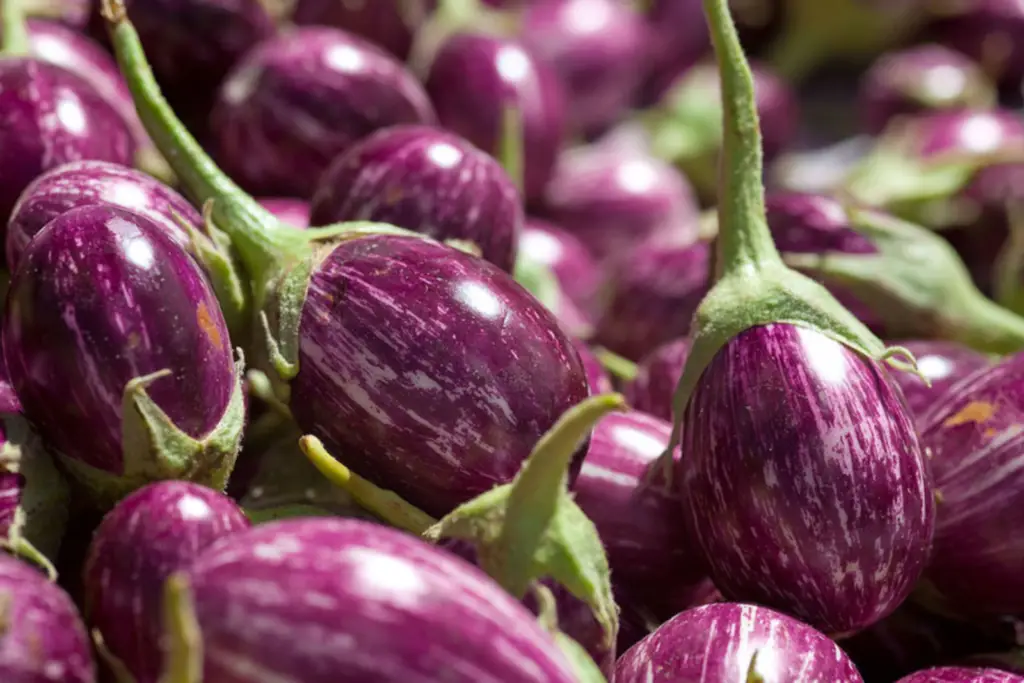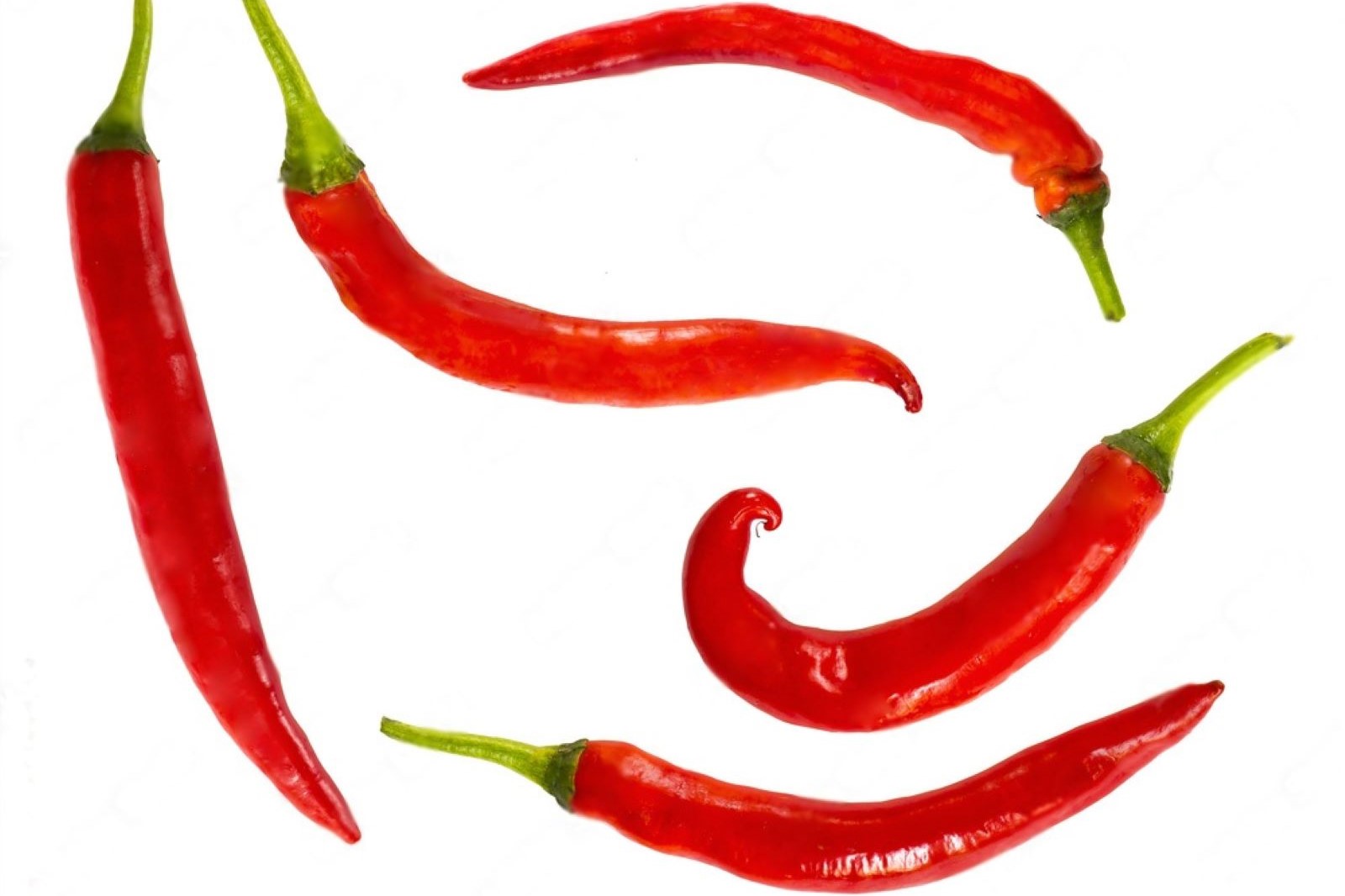
Thai chili peppers, known for their fiery heat and vibrant flavor, are a staple ingredient in many Southeast Asian dishes. Whether you’ve harvested an abundant crop from your garden or stumbled upon a great deal at the local market, freezing Thai chili peppers is a fantastic way to preserve their potency and add a burst of spice to your future culinary creations. This article presents a step-by-step guide on freezing Thai chili peppers while maintaining their intense heat and distinctive taste.
Here’s a comprehensive outline for freezing Thai chili peppers:
- Step 1: Select fresh and ripe Thai chili peppers
- Step 2: Wash and dry the peppers
- Step 3: Prepare the peppers
- Step 4: Consider blanching (optional)
- Step 5: Arrange the peppers on a baking sheet
- Step 6: Flash-freeze the peppers
- Step 7: Package and seal the peppers
- Step 8: Label and date the packages
- Step 9: Store in the freezer
Step 1: Select fresh and ripe Thai chili peppers
When embarking on the journey of freezing Thai chili peppers, the initial step is to meticulously choose the peppers that will serve as the foundation of your preserved spice collection. The quality of the peppers you select during this stage will significantly impact the flavor and heat intensity you experience later on.
The importance of picking fresh and ripe Thai chili peppers cannot be overstated. These peppers should be plucked at the peak of their ripeness to ensure optimal flavor, heat, and nutritional content. Look for peppers that boast vibrant hues, ranging from shades of green to vibrant red, depending on their ripeness and variety.
Furthermore, a thorough inspection is essential. Examine each pepper closely, scanning for any signs of damage, mold, or wrinkles. Blemishes and soft spots can indicate a loss of freshness or the onset of spoilage. By opting for peppers that are unblemished, firm, and free from any visual imperfections, you lay the groundwork for a successful freezing process that preserves the genuine essence of Thai chili peppers.
Step 2: Wash and dry the peppers
Once you have carefully selected the ripe and unblemished Thai chili peppers for freezing, the next crucial step involves ensuring their cleanliness and removing any potential contaminants that might compromise the quality of the final product.
Begin by giving the Thai chili peppers a gentle rinse under cool, running water. This step serves multiple purposes: it helps eliminate any visible dirt, dust, or residues that might have accumulated on the surface of the peppers. Additionally, it can aid in removing any pesticide residues or other chemicals that could have been used during cultivation.
After the rinsing process, it’s important to remove excess moisture from the peppers. This is where the process of patting them dry comes into play. Gently place the washed peppers on a clean kitchen towel or on layers of paper towels. With a soft touch, carefully pat each pepper, absorbing the water droplets that cling to their surface. Ensuring the peppers are thoroughly dry is essential because excess moisture can lead to freezer burn or the formation of ice crystals during the freezing process, both of which can negatively affect the texture and flavor of the peppers.
Step 3: Prepare the peppers
As you progress through the process of freezing Thai chili peppers, the next step involves preparing the peppers to suit your culinary preferences and needs. This step allows you to tailor the peppers’ form for convenience and versatility when you eventually use them in various dishes.
The first decision you’ll make is whether you want to freeze the peppers whole or in a chopped form. Each option has its benefits and considerations, depending on your intended use and personal preference.
If you opt to freeze the peppers whole, it’s recommended to use a knife to make a small slit near the stem end of each pepper. This minor incision serves two purposes. First, it prevents the peppers from bursting during the freezing process, which can happen due to the expansion of water content within the peppers as it turns into ice. Second, it can facilitate the release of heat and steam when you decide to cook with the peppers later, ensuring that your dishes maintain their intended texture.
On the other hand, if you choose to chop the peppers, take care to slice them into your desired size. Whether you prefer fine mincing or larger chunks, ensure uniformity in your cuts to promote even freezing and consistent flavor distribution in your dishes.
Should I remove the seeds before freezing Thai chili peppers?
Whether to remove seeds before freezing Thai chili peppers depends on your preference. Seeds contribute to heat, so keeping them intensifies spiciness. Consider your desired heat level and intended use when deciding to keep or remove seeds.
Step 4: Consider blanching (optional)
As you delve into the intricacies of freezing Thai chili peppers, you’ll encounter the option of blanching, a step that, while not obligatory, can enhance the preservation of the peppers’ visual appeal and texture. This process involves briefly exposing the peppers to high heat before rapidly cooling them down, and it can have a positive impact on the overall quality of your frozen peppers.
Blanching Thai chili peppers serves several purposes. One notable advantage is the preservation of their vibrant color. Exposure to high heat, even for a brief period, can help deactivate enzymes responsible for color deterioration, resulting in peppers that maintain their vivid shades even after freezing.
Additionally, blanching contributes to the preservation of the peppers’ desired texture. By subjecting the peppers to boiling water for a short duration, the cell walls are slightly softened, which can help maintain a pleasing crunch when the peppers are eventually used in cooked dishes. This can be particularly important if you plan to use the frozen peppers in stir-fries or other recipes where texture plays a key role.
To blanch the Thai chili peppers, follow these steps:
- Bring a pot of water to a rolling boil.
- Carefully add the peppers to the boiling water using a slotted spoon or a mesh strainer.
- Allow the peppers to blanch for about 1-2 minutes. The exact timing can vary based on the size and thickness of the peppers.
- Once blanching is complete, promptly transfer the peppers to an ice water bath. This rapid cooling step halts the cooking process and helps preserve the color and texture.
While blanching is optional, it can be particularly beneficial if you value both the aesthetic and textural qualities of the peppers in your future dishes. However, keep in mind that blanching can also slightly mellow the heat of the peppers, so consider this factor when making your decision.
Step 5: Arrange the peppers on a baking sheet
As you progress through the process of freezing Thai chili peppers, proper arrangement on a baking sheet emerges as a pivotal step that safeguards the integrity and convenience of your frozen spice collection. Ensuring an optimal layout during freezing can prevent unwanted complications and ensure easy access to individual peppers when needed.
Once you’ve prepared the Thai chili peppers – whether whole or chopped – it’s essential to place them on a baking sheet in a single layer. This arrangement serves two primary purposes that contribute to the quality of your frozen peppers.
First and foremost, spacing out the peppers on the baking sheet ensures that they do not come into contact with each other. As the peppers freeze, any moisture present on their surfaces can turn into ice, potentially causing them to stick together. This undesirable sticking can make it challenging to retrieve individual peppers when you need them for your dishes. By placing the peppers in a single layer with enough space between them, you mitigate the risk of clumping and make it easier to access the desired quantity without any hassle.
Additionally, allowing the peppers to freeze in a single layer facilitates more efficient and consistent freezing. It enables the cold air within the freezer to circulate around each pepper, promoting uniform freezing and minimizing the formation of ice crystals. This, in turn, helps maintain the peppers’ texture and flavor, ensuring that they retain their characteristic heat and color when you incorporate them into your culinary creations.
Step 6: Flash-freeze the peppers
As you continue on the journey of freezing Thai chili peppers, the critical step of flash-freezing emerges as a technique that ensures the preservation of both the peppers’ individuality and their potential for seamless culinary integration. Flash-freezing is a method that capitalizes on speed to lock in freshness and prevent undesirable clumping, making it an essential process for preserving the quality of your frozen peppers.
To initiate the flash-freezing process, position the baking sheet adorned with the prepared Thai chili peppers inside the freezer. The rapid drop in temperature in the freezer environment plays a pivotal role in achieving the objectives of this step.
Allow the peppers to remain in the freezer for a span of several hours, or until they solidify. This period can vary based on the size of the peppers and the efficiency of your freezer, but it’s generally recommended to leave them in until they are uniformly firm to the touch. This rapid freezing process, known as flash-freezing, is crucial for multiple reasons.
Firstly, flash-freezing peppers individually prevents them from clumping together. As the peppers freeze, any moisture present on their surfaces solidifies. Without proper spacing, this moisture can cause the peppers to stick to one another, leading to challenging and time-consuming separation when you need them for cooking. By freezing each pepper individually, you avoid this issue altogether, enabling you to access the desired quantity effortlessly.
Furthermore, flash-freezing helps preserve the peppers’ texture and flavor. The rapid freezing process forms smaller ice crystals within the peppers, minimizing cell damage and preventing the formation of larger ice crystals that can compromise their integrity. This preservation of texture and flavor ensures that when you incorporate the frozen peppers into your dishes, they maintain the intense heat and distinct taste that Thai chili peppers are known for.
Step 7: Package and seal the peppers
As you near the completion of the freezing process for your Thai chili peppers, the critical step of packaging and sealing emerges as the final touch that preserves their integrity and ensures long-term quality. Properly packaging and sealing your flash-frozen peppers is essential for guarding against freezer burn and maintaining their vibrant flavor and intense heat.
Begin by gently transferring the flash-frozen Thai chili peppers from the baking sheet into airtight freezer bags or containers. The airtight nature of these packaging materials plays a vital role in protecting the peppers from exposure to the cold, dry air of the freezer, which can lead to freezer burn—a condition that dehydrates and damages the outer layer of food items.
When placing the peppers into the bags or containers, strive to minimize the presence of air within the packaging. Air can promote freezer burn by allowing moisture to evaporate from the peppers and create ice crystals on their surface. To achieve this, gently press the bags or containers to remove as much air as possible before sealing. Some freezer bags come with a resealable feature that allows you to expel excess air efficiently.
Sealing the bags or containers effectively is crucial to maintain an airtight environment for the peppers. Ensure that the closures are secure and well-sealed to prevent any air from infiltrating the packaging. This airtight seal serves as a barrier against freezer burn and helps maintain the peppers’ flavor, heat, and overall quality over time.
Step 8: Label and date the packages
As you approach the final stages of freezing your Thai chili peppers, the task of labeling and dating the packages becomes a fundamental step that contributes to organization, convenience, and the maintenance of optimal quality over time. Properly labeling each package is an essential practice for keeping track of your frozen peppers and ensuring their effective use in your culinary endeavors.
To embark on this crucial step, arm yourself with a permanent marker that’s suitable for writing on freezer-safe packaging materials. As you prepare to label the packages, there are two key pieces of information to include: the date of freezing and a description of the contents.
The date of freezing serves as a chronological reference point. By recording the date when the Thai chili peppers were frozen, you create a timeline that allows you to track the duration of their storage. This is vital because while frozen foods can remain safe to eat indefinitely, their quality can gradually decline over time. Knowing the freezing date empowers you to prioritize the use of the oldest peppers first and make the most of their vibrant flavor and heat.
Additionally, including a description of the contents provides clarity and helps you quickly identify the package you need. A brief label such as “Flash-Frozen Thai Chili Peppers” or “Chopped Thai Chilis” can make a significant difference when you’re searching for a specific ingredient amidst a freezer full of packages.
This step is particularly crucial if you have multiple types of frozen ingredients in your freezer. Clear labeling ensures that you can quickly distinguish between different items and access the desired ingredient without extensive searching or thawing.
Step 9: Store in the freezer
As you approach the final step of freezing your Thai chili peppers, the task of storing them properly within the freezer becomes the ultimate safeguard for preserving their flavor, heat, and quality until you’re ready to unleash their culinary magic. Storing the sealed packages of frozen peppers in an appropriate manner ensures that they remain a versatile and potent ingredient for your dishes, even months down the line.
To complete this step, find a suitable spot within your freezer where you can place the sealed packages of Thai chili peppers. Ideally, opt for an area that maintains a consistently low temperature, typically around 0°F (-18°C) or lower. This low temperature setting is crucial for maintaining the quality of the peppers over an extended period.
Consistency in temperature is key. Fluctuations in temperature can lead to the formation of ice crystals, which can degrade the texture and flavor of the peppers. By selecting a spot with stable coldness, you minimize the risk of these negative effects.
Furthermore, consider the packaging materials you’ve used. Airtight packaging, combined with proper sealing, acts as a barrier against freezer burn and moisture infiltration. Placing the peppers in the coldest part of the freezer, often near the back and away from the door, also helps maintain the desired temperature.
How long can I store frozen Thai chili peppers?
Frozen Thai chili peppers can be stored for approximately 6 to 12 months without significant quality loss if kept at a consistently low temperature (0°F or -18°C). However, while they remain safe to eat beyond this time frame, their flavor and texture may deteriorate gradually. Proper storage, including airtight containers and labeling with freezing dates, helps maintain their quality.
Other related questions
How do I defrost Thai Chili Peppers?
To defrost Thai chili peppers, transfer the sealed package from the freezer to the refrigerator. Allow them to thaw slowly for several hours or overnight. Avoid using heat or water to expedite thawing, preserving their texture and flavor.
Can I use frozen Thai chili peppers directly in cooking?
Yes, frozen Thai chili peppers can be used directly in cooking. Adding them to hot dishes like soups, stews, and stir-fries eliminates the need to thaw. Their intense flavor and heat will disperse as they cook.
Can I refreeze Thai Chili Peppers?
Refreezing Thai chili peppers is generally not recommended due to potential quality loss. Once thawed, peppers may experience texture and flavor changes. To maintain optimal quality, plan portion sizes before freezing and use defrosted peppers promptly.
How do I know if the Thai chili peppers have gone bad after being frozen?
Signs of bad frozen Thai chili peppers include freezer burn, texture changes (sogginess), off odors, or altered flavor. Inspect for visual alterations and use your senses. Proper storage ensures quality preservation and safe consumption.
Can I freeze Thai chili peppers in oil?
Freezing Thai chili peppers in oil is possible, but requires careful steps. The oil may solidify, affecting texture. Risks of botulism arise due to anaerobic conditions. Follow safe guidelines and monitor for any signs of spoilage when freezing peppers in oil.
What dishes can I use frozen Thai chili peppers in?
Frozen Thai chili peppers can enhance various dishes. Add them to soups, curries, stir-fries, sauces, and marinades for a spicy kick. They complement Asian, Mexican, and many global cuisines. Experiment to balance their heat and flavor in your preferred recipes.
Can I freeze Thai chili peppers in a sauce or puree?
Yes, freezing Thai chili peppers in a sauce or puree is possible. Blend peppers with oil or water into a smooth consistency. Portion into ice cube trays or containers for easy use. Thaw only the amount needed for recipes to maintain quality.
Can I freeze Thai chili peppers that have been dried or smoked?
Yes, freezing dried or smoked Thai chili peppers is feasible. Keep in mind that texture and flavor may change due to prior processing. Seal in airtight containers to prevent moisture absorption and label with freezing date for reference.


